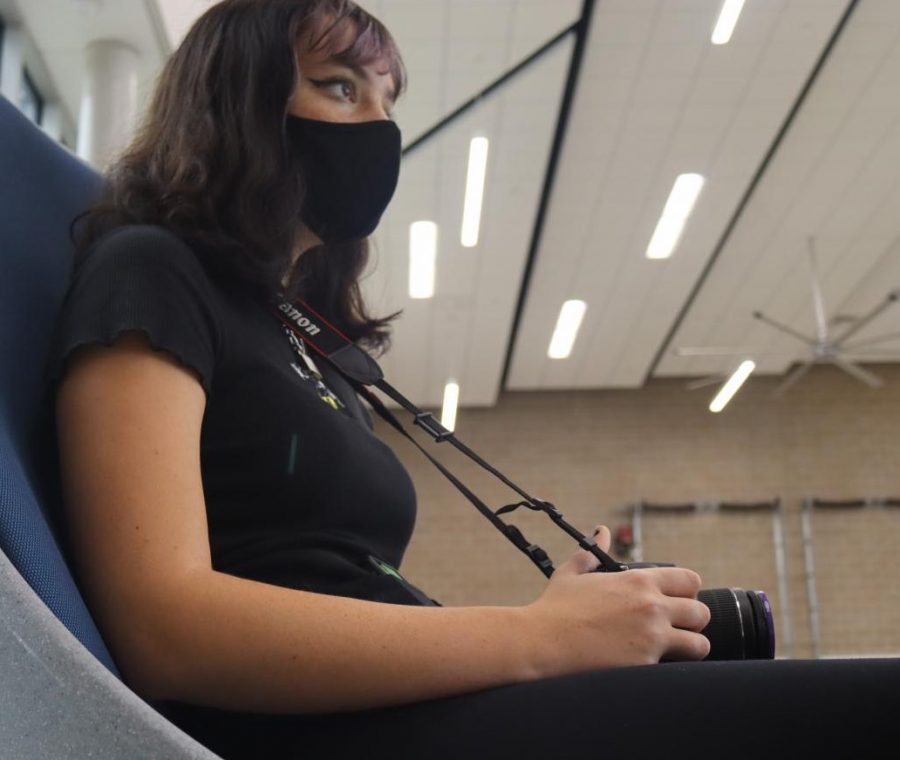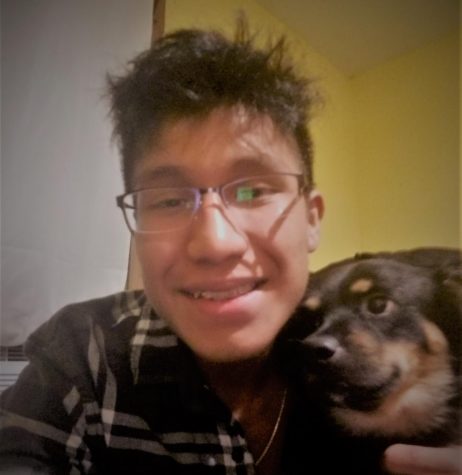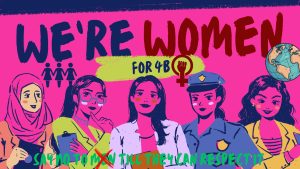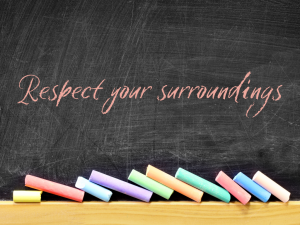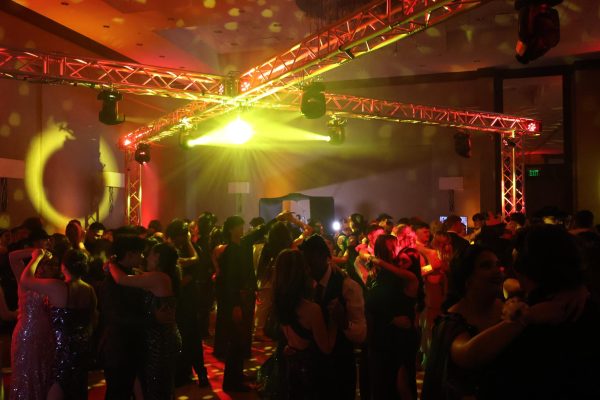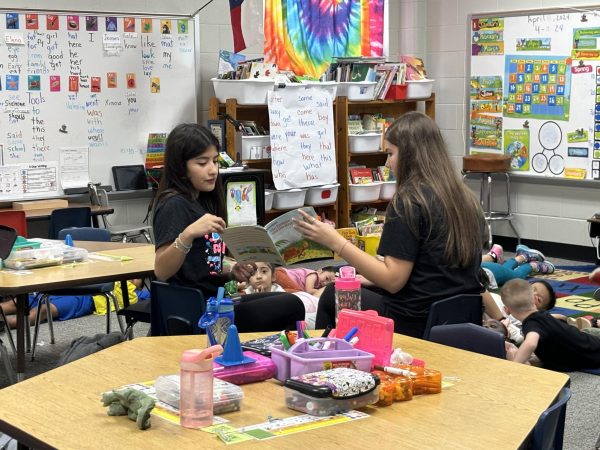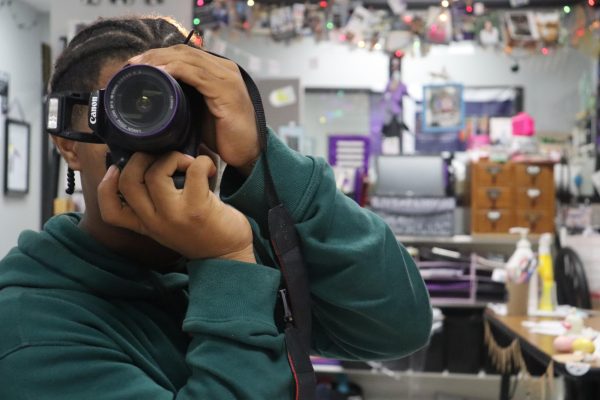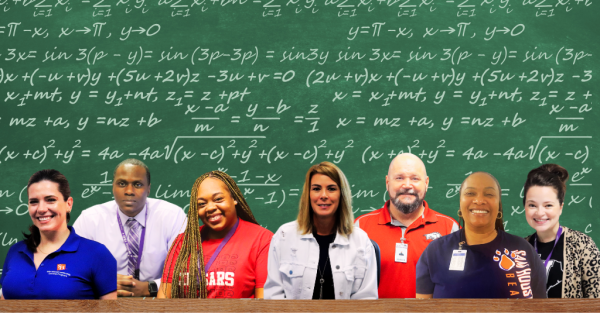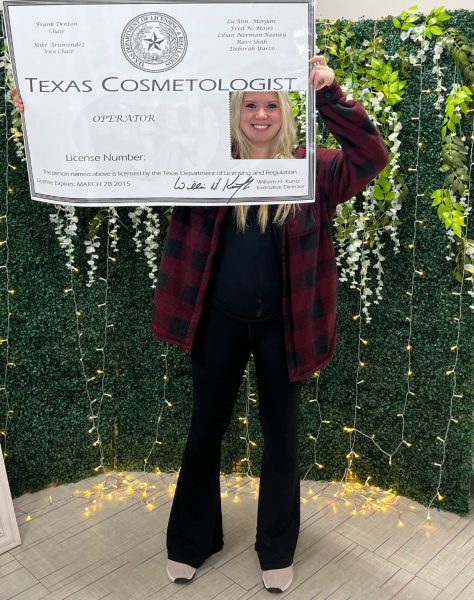Safety measures masks communication
Students, teachers learn to adjust to life behind face coverings
photo or infographic by Avery Cheatham
ALL MASKED UP. Taking pictures in the CTE building, junior Madi Bagley wears a mask while completing her yearbook assignment.
Oct 23, 2020
Smelling the faint scent of sanitizer and nothingness. Speaking through the masks that covers everyone’s face from day to day. A new year full of faceless people with muffled voices and distant greetings.
All for the safety of themselves and others. All to keep this pandemic from spreading any further. All because of COVID-19.
The school year started with restrictions in an attempt to limit exposure to COVID-19. These regulations included directional hallways, social distancing, sanitizing and organized exits in order to ensure the safety of everyone. All students, teachers and staff members are also required to wear a face covering while at school.
“The health and safety of students, faculty, and staff should definitely be a priority. WISD’s mask requirement and WHS’s COVID plan seems to be working relatively well since we haven’t had any major outbreaks,” College Algebra teacher Rachel King said. “We initially had some pushback from some students when implementing the new requirements, but overall it’s been a smooth transition.”
Communication in school has been limited while walking from class to class, and communication in classrooms is different than before with the addition of masks.
“I think school life changed drastically with the new regulations and mask. It’s very awkward and hard being that far away from my classmates,” senior Christian Sanchez said. “It is also very difficult remembering that we can’t approach people now like how we used to.”
With the absence of facial expressions came alternative options of communication.
“Now with mask, I have to use more body language and verbal language rather than just facial expressions,” Sanchez said. “Also, with a mask I feel like I have to speak up so that people can hear me.”
Teachers have created their own way of reading the room and although things have changed they have no problem going about their day to day lessons.
“To some extent I do believe it has affected my non-verbal forms of communication,” King said. “Wearing a mask prohibits me from being able to read certain facial expressions from my students. I typically try to use non-verbal queues as a way to read the class, and to be able to tell whether they are understanding the material or not. When speaking in a small setting, I do not believe it has affected my communication with others.”
Many do not believe that masks have affected their communication at all, they have simply gotten used to it and adjusted their own way of communication.
“School life has a new dynamic now with the new rules, and I feel as if the rules don’t do much except make things hard, and for the masks they are very important and should be worn yet they have not really made the school year too different,” senior Joseph Yebra said. “I do not believe masks have changed my communication with others, seeing that if I cannot be heard then I can just talk louder”
Others have grown accustomed to masks and see no problem with them other than the fact that it has taken some activities away.
“I don’t think masks have affected our communication,” senior Brayden Wilder said. “It’s different and has taken time to get used to, but what I hate is it (COVID-19) has taken away lots of our senior activities.”
School lunches are socially distanced and organized to help students maintain social distancing and uphold any new health codes in the cafeteria.
“The masks are a little restricting at time and some of the rules we have to follow at lunch are a little aggravating,” senior Samuel Seppanen said. “Some cons of the masks with communication is they make it harder to hear others when talking and a pro can be someone does not have to smell your breath when you talk to them.”
Teaching with masks has changed from how it was before but with the help of the school’s staff preparations educators are able to adjust easily to any kinds of changes.
“When speaking to a large group, like in a classroom, the mask sometimes muffles certain words or phrases,” King said. “I’ve learned to slow my speech and to speak louder so that I am more clear and able to get my point across.”


